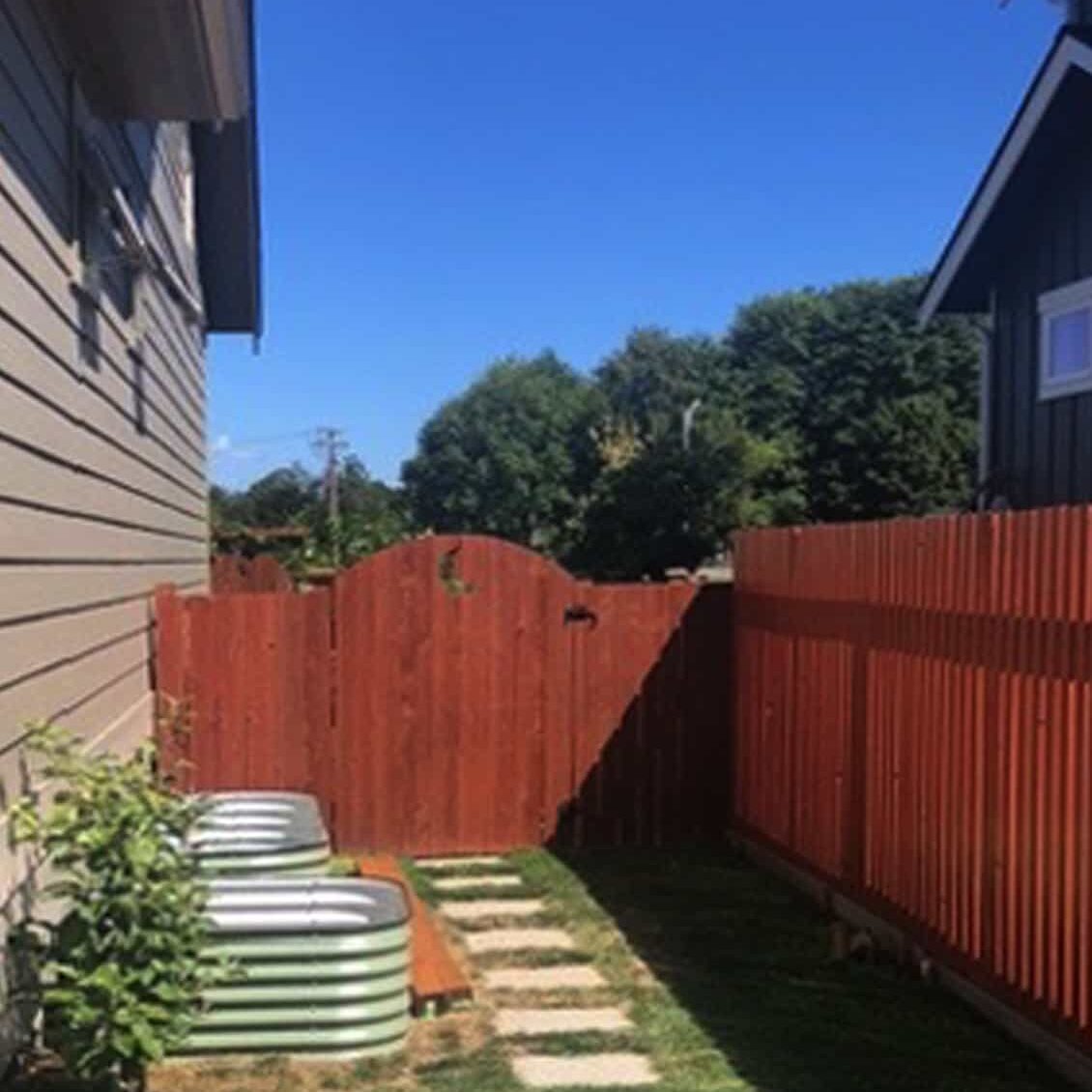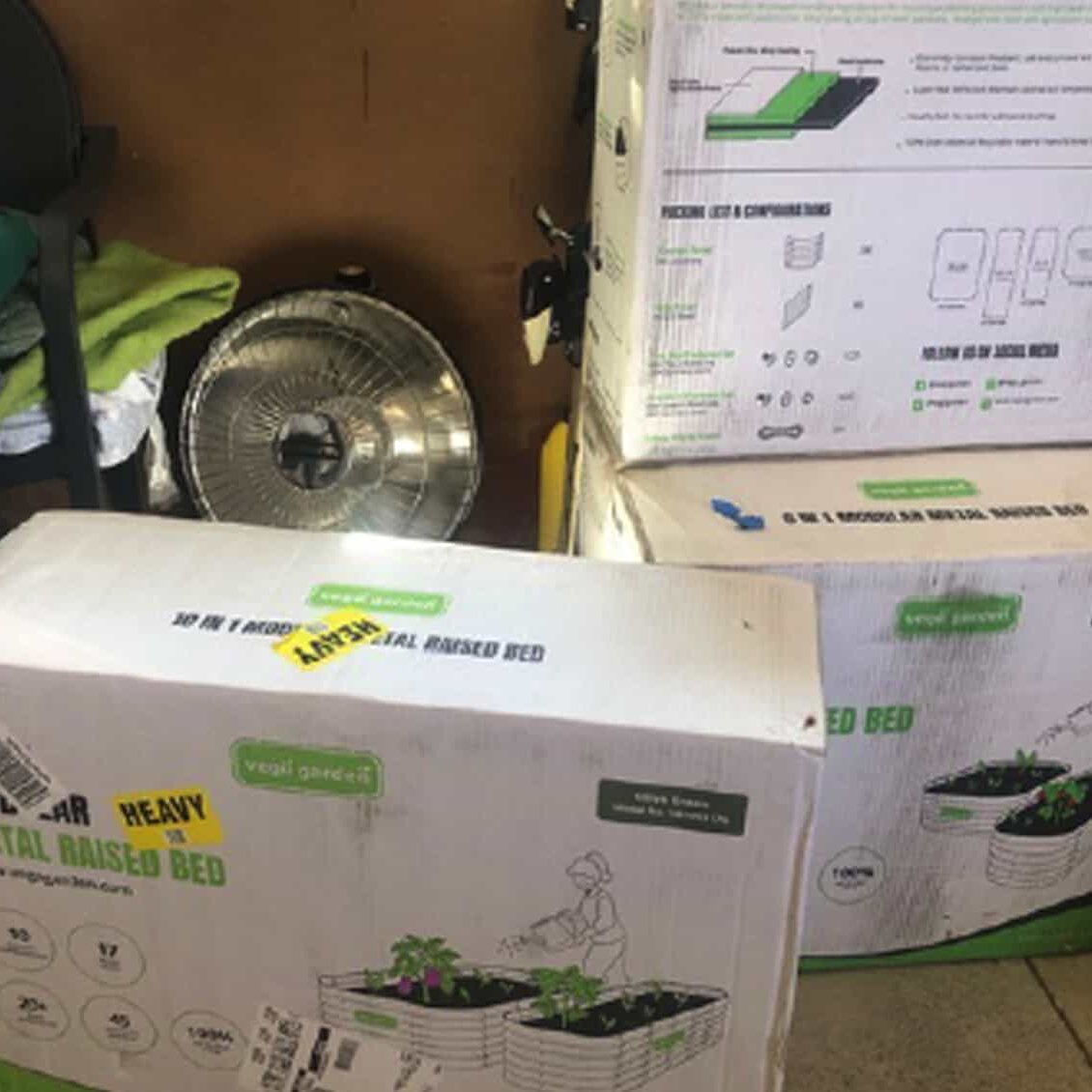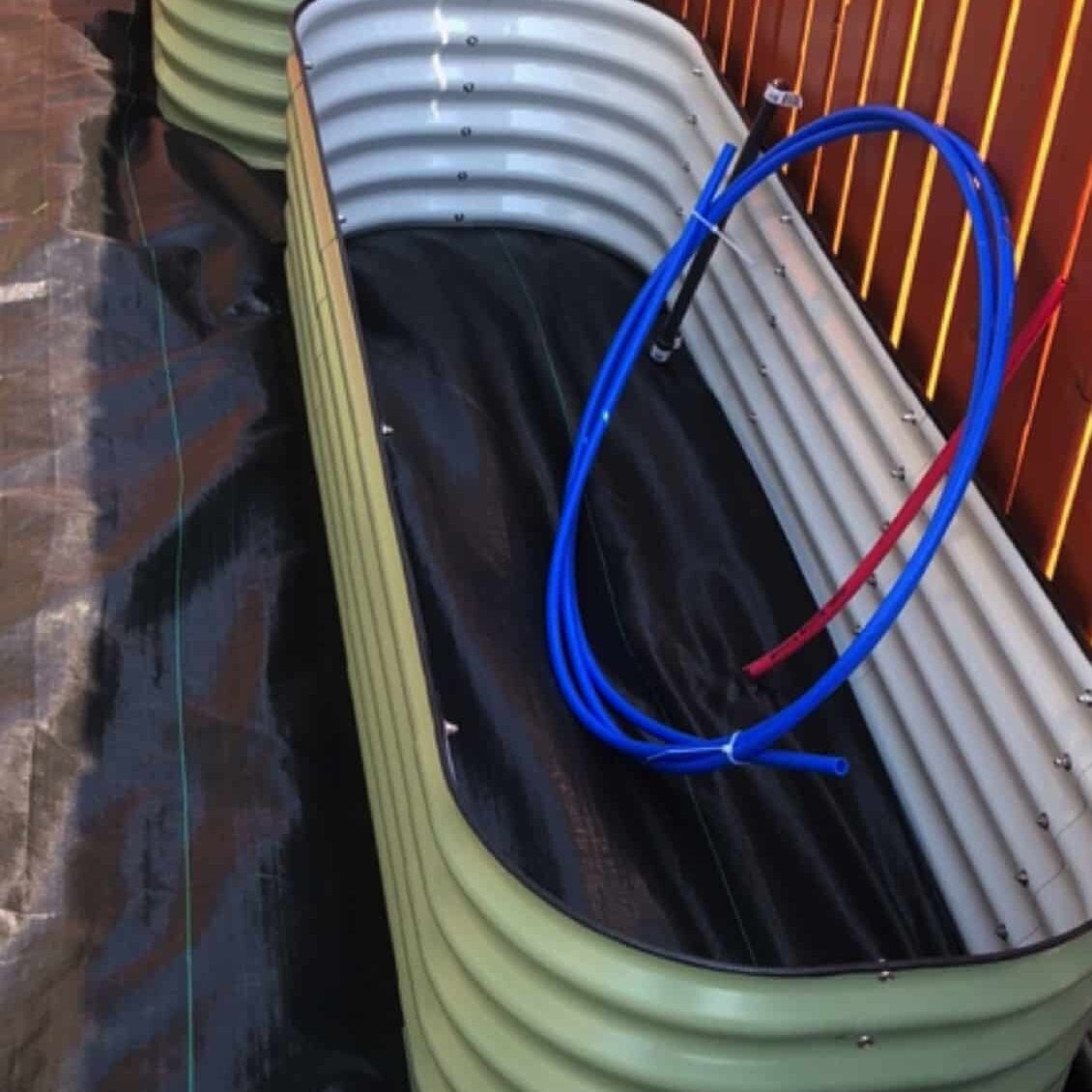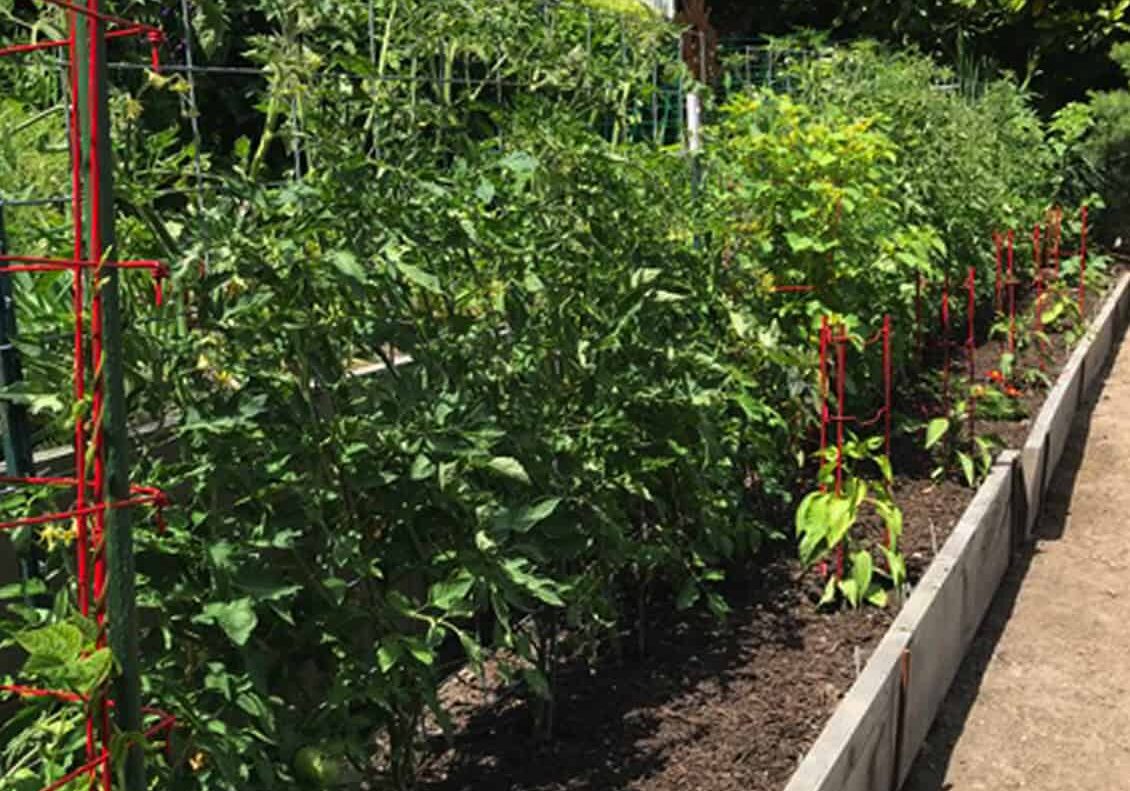Veggie Gardening for Rookies


Help for the Vegetable Garden Novice
Tips every first-time vegetable gardener should consider
By Anne Hays and Cathy Markham, Skagit County WSU Extension Master Gardeners
I am a vegetable garden rookie! There, now you know.
Some of us become gardeners later than others. I grew up moving from state to state just about every year. Our family’s unique military and government-dictated lifestyle left few opportunities for gardening growing up. As an adult, I found myself living in Alaska, spending 30-plus years tending fireweed, wild lowbush blueberries, and devils-club. Now, living in the abundantly beautiful Skagit Valley, I have the time and desire to learn how to successfully plant and grow a vegetable garden. As a novice, first-time veggie gardener, I turned to my wonderful friend and fellow Master Gardener, Cathy Markham, and asked her to mentor me through the process. The following is a journal of guidance and learning with the goal of a vibrant and bountiful vegetable garden this coming spring and summer.
Think Before You Leap
As both a gardener and a chef, Cathy has been growing a cook’s garden for many years. Both her Italian grandmother, on the central coast of California, and her mother, in the high mountain desert of Idaho, grew gardens. Cathy has never known a time when her family didn’t grow, harvest, and preserve.
Cathy advises working to get the most out of your garden space. When she teaches about gardening, she advises “Think before you leap.” Answer a couple of key questions such as “What do you want to take away from your decision to garden and what kind of commitment are you honestly willing to make regarding time, dedication, and hard work?” There are no wrong answers; it is just very helpful to define your expectations.
After many, many years of experience gained from multiple acres of gardens, and knowledge collected from gardeners who have gone before her, Cathy asks every novice vegetable gardener to consider:
Do you have a space that is prepared to plant? Is the soil in need of amending? Is there adequate water and is the sunlight appropriate for your garden space?
Is your space protected from deer, rabbits, or other animals that see your garden as a free salad bar?
Are you prepared to tend your garden frequently, checking for insects and disease, weeding, tending seedlings, and then harvesting for maximum yield?
Considering these questions will help you decide if “digging in” and starting a home vegetable garden is for you. In fairness, sometimes our lives or interests can’t support the commitment of growing a garden and it is better to support a local farm stand. Gardening is just not fun when you are constantly trying to keep your plants alive in poor soil and conditions, or when you are doing the added work of trying to keep the deer and rabbits out of your garden. If you are serious about getting a harvest for delicious eating and winter storage, the answers to these questions are important.
After listening to Cathy’s advice, considering her questions, and thinking through our commitment to becoming vegetable gardeners, my partner and I said “Yes! We are ready and committed to growing our own vegetable garden.”
This past fall, we set about building a garden space, installing six vinyl-clad trough-style raised beds which were ordered from an online source.


Opting to use drip irrigation, we installed the necessary infrastructure and then filled the six beds with commercially distributed topsoil. Placed next to the house on the south side, three beds measure 3.5 feet by 3.5 feet. Two beds measure 2.5 feet by 8 feet and one measuring 2 feet by 6.5 feet, adjacent to the square beds with a 6-foot path and workspace in between. We plan to attach hog-wire to the house wall for trellising above the three, square beds.
The investment, not including the raised beds, came to $539.63. Once everything was in place, we invited Cathy to visit the newly minted, naked garden. She thought the raised garden beds looked great; having the potential for lots of sun, available irrigation, and plenty of space for vertical growing! Cathy suggested getting started right away by planting winter veggies such as leeks, kale, and garlic as a first foray into the veggie gardening realm.
Rookie Alert: The eight garlic cloves purchased were about six more than most any household needs. Cathy happily adopted the surplus garlic for her garden. Then she quietly pointed out that the leeks, which by then, looked more like bunches of scallions, needed to be separated from their clumps to grow with adequate space. Who knew?


The Next Step – Planning What to Grow
Here again, Cathy's advice, based on years of experience and research-based learning, was invaluable—she helped us decide what to grow; when to grow; and whether to buy starts versus seeds. Her advice is to grow what you love to eat. Okay, then not so many cukes since my partner is not a fan. Cathy recommends a wonderful book: Grow Cook Eat by Willi Galloway as a starting point for garden planning.
Starting with Seeds Versus Buying Plant Starts
Locally grown plant starts are a reliable way to get up and running. But spending time with seed catalogs is enthusiastically encouraged! Some favorites are provided in the references below.
The next steps will include getting together during the cold and dark winter months for tea or warm cider to go through seed catalogs and map out the garden planting. Raised bed experts recommend growing tomatoes on a trellis, and weaving in other climbers, such as beans, on the same trellis to efficiently utilize the space. It is key to plant at the right time – don’t start too early!
Here are some of the guiding principles Cathy encourages new gardeners to lean on:
Grow what you love to eat.
- You have a lot of choices for what to plant in your vegetable gardens but the best choices are the ones you or your family are actually willing to add to your diet and eat. You are more likely to put the work into the garden and harvest for foods you love to eat.
Start small and be successful with easy-to-grow plants.
- A very small garden can be very productive and rewarding. It gives you a chance to experiment with plants, maybe one tomato plant or eggplant. Greens, bush beans, cherry tomatoes, carrots, and herbs are an easy way to start. Choose bush and dwarf varieties for small spaces so you won’t have to worry about staking. If you have vertical space, climbing vegetables are great; these include peas, beans, cucumbers, indeterminant tomatoes, and now several new varieties of squash have been developed which grow vertically in small spaces.
Grow nutrition-rich and versatile choices.
- Adding nutrient-dense vegetables to our diet is always a plus! Dark leaved greens like kale, spinach, and chard; rich dark root vegetables like beets and carrots; peas and beans, garlic, onions, leeks, and shallots; broccoli or broccolini; and tomatoes!
Grow what is expensive to buy or is not as flavorful when you buy it.
- This is especially true of herbs which are easy to grow for the most part and make a huge difference in food preparation. Tomatoes and English peas (shelling peas) are examples of vegetables that are so much better fresh from the garden. Potatoes and corn are plentiful and readily available, so you may choose to skip giving up the space it takes to grow them.
Decide what “mountains to die on.”
- Based on your time and patience, decide what you are willing to deal with in your garden. For example, you may choose not to grow many vegetables from the cabbage family because you are not willing to deal with the bugs and worms that they attract. You may choose instead to grow broccolini, a short, early-season vegetable, or maybe Kalettes (a cross between kale and Brussels sprouts) because they are fun. You can buy what you choose not to grow at a farmer’s market.
- We live in an area where an excellent choice of vegetable starts is available. If you have a new garden, this is a big boost to success because you don’t have to deal with the germination of seeds. Beans are the exception here, they do best when grown from seed. The plus for growing from seed is the huge variety of available seed sources. This may not be a priority for new gardeners.
Grow organic as much as possible.
- The better you take care of your garden the less you will need to use any chemicals on it. Keep the garden clean of weeds, and mulch to keep the weeds down and the soil moist. Keep the pathways clean also; weeds and grass are very difficult to manage when they grow big. It is easier to pick them small, not letting the weeds compete for nutrition. Thinning your growing plants appropriately will cause them to grow strong and able to survive the normal garden bugs. Use a foliar spray made of a mix of kelp concentrate and fish emulsion for fertilizing. Water the plants consistently so they do not become compromised and weak, which leads to disease.
Begin at the right time – don’t start too early.
- It is so tempting to get the seeds or plants in the garden early. The first sunny day seems warm enough – surely we are done with the cold weather! Garden success comes from resisting this temptation. It isn’t a competition with anyone else, or a race to see who can get the earliest peas. Take the time to prepare the gardens, clean out the flower beds, and pace yourself. This may not suit some, but except for garlic, which gets planted in late October, and leeks and shallots in March, planting can wait until April for the cool spring crops, and everything else until mid to late May. Wait patiently until late May and or even early June to plant tomatoes, eggplant, peppers, and tender herbs like basil. Until the soil is warm, so many plants just shiver and sit. But if you wait until the soil is warm, seeds will germinate quickly and plants are stronger. A compromised plant may not ever get back the vigor of one that has not been traumatized by the weather!
Commit to what you start, that is – take care of your garden. And have fun!
As winter turns to spring, we will meet, talk, plan, and put these guiding principles into action. We plan to continue with a follow-up blog post in spring to report back about our plans and decision process. We promise, you’re going to want to learn more about our garden pest-repelling strategies.

REFERENCES:
Galloway, W. (2012). Grow Cook Eat: A Food Lover’s Guide to Vegetable Gardening. Seattle, WA. Sasquatch Books.
Raymond, D. (1983) Joy of Gardening. North Adams, MA. Storey.
Damrosch, B. (2008) The Garden Primer: The Completely Revised Gardener's Bible. New York, NY. Workman Publishing Company.
LeHoullier, C. (2014). Epic Tomatoes. North Adams, MA. Storey.
Robinson, Jo. (2014). Eating on the Wild Side. New York, NW. Hachette Group.
Miles, C. (2013). WSU Home Vegetable Gardening in Washington. Washington State University Extension Publication #EM057E. https://pubs.extension.wsu.edu/home-vegetable-gardening-in-washington-home-garden-series.
This is a non-inclusive list of seed purveyors to consider:
Renee’s Garden Seeds, www.reneesgarden.com
For some varieties of seeds, Renee’s offers combination packages of two or three types of seeds, dyed so you can differentiate. This is especially nice for variety without planting a huge garden. The tri-color beans and three variety zucchinis are particular favorites.
Italy-Franchi www.growitalian.com
Territorial Seed Company https://territorialseed.com/
Johnny’s Selected Seeds Company https://www.johnnyseeds.com/

Learn from the experts at the
Country Living Expo
& Modern Homesteading
Saturday, January 27, 2024
Learn More and Register Here >>
These Gardening Topics and More:
- Fruit Tree Pruning & Grafting
- Microclimates in the Garden
- Low Maintenance Gardening
- Roses
- Bee Keeping
- Soil Sampling
- Veggie Gardening
- Growing in High Tunnels, Cold Frames, and Unheated Greenhouses
- Pest Control
- Hop Growing
- Flower Arranging
- Know Your Native Trees
- Introduction into Mason Bees
 Anne Hays |
 Cathy Markham |
ABOUT THE AUTHORS:
Anne Hays and Cathy Markham are certified Skagit County WSU Extension Master Gardeners, Class of 2022. Cathy has a degree in food and nutrition from the University of Idaho and is a Registered Dietician. Her vegetable garden has been featured in the Seattle Times Sunday Magazine.
Questions about home gardening or becoming a Master Gardener, may be directed to: Skagit County WSU Extension Office, 11768 Westar Lane, Suite A, Burlington, WA 98233; by phone: 360-428-4270; or via the website: https://extension.wsu.edu/skagit/mg/
Well planned. I’m sure you will be rewarded with bounty!
Anne and Kathy – Loved reading the article. I moved around with my job for years and couldn’t really have a garden until I retired. I am also new to the PNW, so it was great to read about your experiences. You took a much more measured and analytical approach to it than I did. My first year, I planted a little of everything, and it was a disaster. I planted too early and had weak plants all year. Garlic is easy growing jewel. I know it is cheap to buy, but one row keeps me in garlic all year, and that feels like a win! Kay